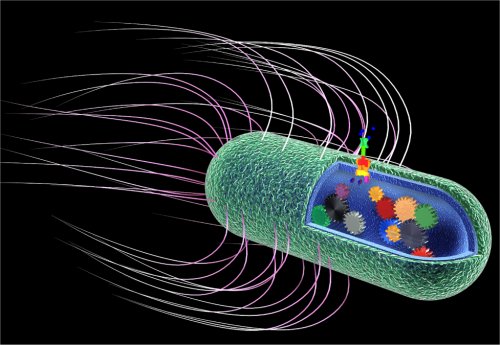Advanced Computing, Mathematics and Data
Research Highlights
March 2009
Computational Science Leveraged for Infectious Disease Research
PNNL's powerful computational tools will enable better understanding of infectious diseases in humans
Results: Computational science at Pacific Northwest National Laboratory will play a key role in understanding how infectious organisms work in two five-year research programs being funded for over $30 million by the National Institute of Allergy and Infectious Diseases, a part of the National Institutes of Health.
PNNL, with nine other institutions, is collaboratively using a systems biology approach to analyze, identify, quantify, model and predict the process involved in the step-by-step development of infections caused by the influenza and SARS viruses and the pathogenic bacteria, Yersinia and Salmonella.
Jason McDermott, Harish Shankaran, and Katrina Waters, senior research scientists in the Computational Biology and Bioinformatics Group, will provide modeling and analysis of the high-throughput data that is generated in these research programs. The goal is to determine the mechanisms by which these pathogens adapt to and manipulate the cellular environment after infecting their host targets.

An idealized illustration of Salmonella Typhimurium, with a type III secretion system and gears representing a systems biology approaching to studying this and other pathogens. Research to elucidate how these pathogens function could lead to improved antibiotics or therapeutics. In other words, we are trying to identify the best place to "throw a wrench into the works". Image generated by Dr. Ken Auberry.
Why it matters: Scientists anticipate discoveries from the research could lead to more precise drug therapies and control strategies for a wide range of viral and bacterial pathogens. The knowledge gained will benefit research not only of these specific pathogens, but to other related viruses and bacteria. Computational modeling and analysis is essential to interpret the complex data being generated by the research projects and will lead to valuable insights into the process of virulence and host immune response at a systems level. High performance computing resources and expertise will help to rapidly drive and advance these scientific discoveries.
Methods: Researchers from several institutions are collaborating to provide top-down models and predictions based on the high-throughput, genome-level data. Computational scientists at PNNL, Oregon Health Sciences University, the University of California San Diego, and the University of Amsterdam will be working with the data-generation components at PNNL, University of Washington, J. Craig Venter Institute, and Washington State University, as well as with experimental groups at Oregon Health and Sciences University, the University of North Carolina at Chapel Hill, the University of Wisconsin at Madison, and University of Texas at Galveston.
The modeling teams will use statistical inference methods to reconstruct biological networks from the high-throughput data generated by the research projects. These networks will be analyzed by assembling groups of genes and proteins into the molecular pathways critical to virulence and the response of the host to infection. Specific processes related to virulence will be modeled using innovative simulation approaches and, through the examination of these models, researchers will make novel predictions to drive further experimental investigation and development of strategies for therapeutic intervention. The modeling strategies applied to these programs have been developed at PNNL through Laboratory-Directed Research and Development funding and, if successful, have broad potential application to other areas of national concern, such as bioenergy, microbial communities and low-dose radiation effects on human health.
Acknowledgment: This research is conducted through Interagency Agreement IAA No. Y1-AI-8401-01 and contract No. HHSN272200800060C.
Related Links:
